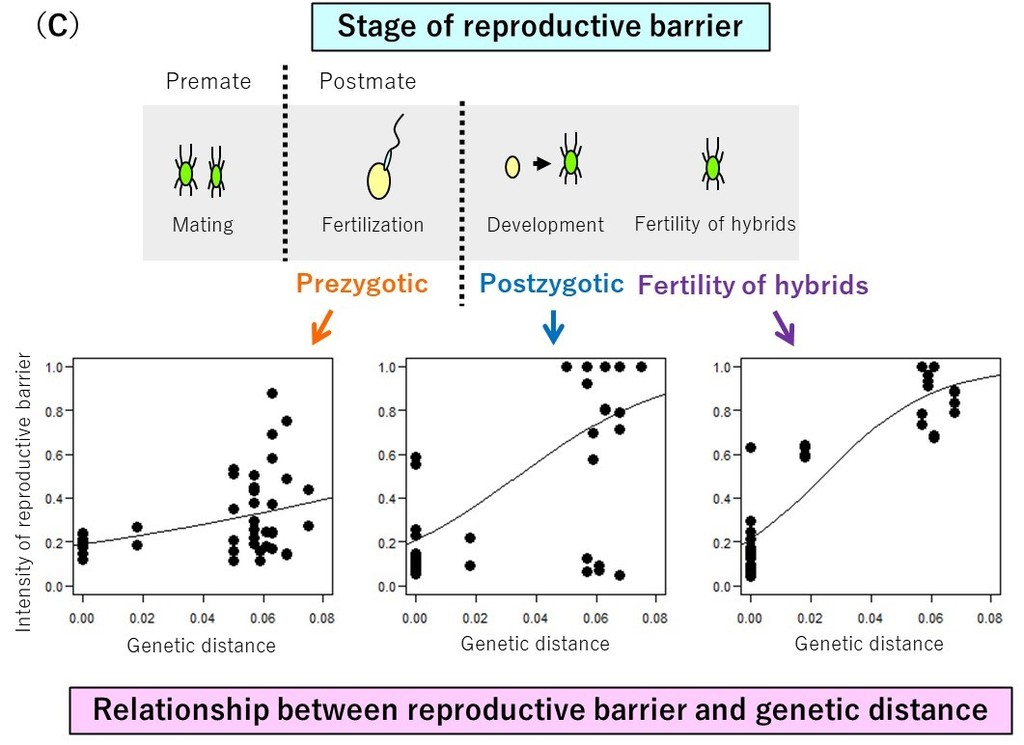・The evolution of reproductive isolation is an important process, generating biodiversity and driving speciation.
・We investigate whether the relationship between the degree of reproductive isolation and genetic distance holds in a haplodiploid spider mite, Amphitetranychus viennensis (Zacher).
・The prevalent view on the evolution of reproductive barriers is supported in the haplodiploid spider mite.
Abstract
Evolution of reproductive isolation is an important process, generating biodiversity and driving speciation. To better understand this process, it is necessary to investigate factors underlying reproductive isolation through various approaches but also in various taxa.
Previous studies, mainly focusing on diploid animals, supported the prevalent view that reproductive barriers evolve gradually as a by-product of genetic changes accumulated by natural selection by showing a positive relationship between the degree of reproductive isolation and genetic distance.In this study, we investigate whether the relationship also holds in a haplodiploid spider mite, Amphitetranychus viennensis (Zacher).
According to the estimated minimum genetic distance for total reproductive isolation in parent population crosses in this study and previous work, a genetic distance of 0.15–0.21 in Mitochondrial DNA(mtDNA) appears required for speciation in spider mites. Variations and asymmetries in the degree of reproductive isolation highlight the importance of reinforcement of prezygotic reproductive isolation through incompatibility and the importance of cytonuclear interactions for reproductive isolation in haplodiploid spider mites.
Benefit
We found that the degree of reproductive isolation varies among cross combinations, and that all three measures of reproductive isolation(hybrid sterility, hybrid inviability,hybrid sterility) have a positive relationship with genetic distance.
In conclusion,The prevalent view on the evolution of reproductive barriers is supported in the haplodiploid spider mite.
Market Application
Biochemical pesticides
Publications
IP
Status: Not Filed
Other
https://www.tsukuba.ac.jp/en/research-news/20210923070000.html


